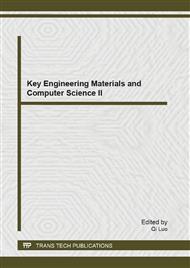p.139
p.146
p.153
p.158
p.164
p.170
p.177
p.184
p.188
Optimization of Mechanical Properties of Plasma Spraying Ceramic Coatings Using Artificial Intelligent Approaches
Abstract:
This study reports on the use of Fuzzy-Grey systems, with a Taguchi designed experiment to enhance the quality characteristics of yttria stabilized zirconia (ZrO2/8%Y2O3) coatings, made by a plasma-sprayed process. Eight control factors were designed in an L18 orthogonal array experiment, and the effects of the control parameters on the surface properties were critically evaluated in the experiments. Multi-response characteristic terms-surface roughness, hardness and wear depth values in the sprayed ZrO2/8%Y2O3 coatings through the optimization were studied comparatively. A Fuzzy-Grey approach, based on the Taguchi orthogonal experiments for optimizing multi-response performance in the coatings, was reported. In addition, the influence of control factors on the Fuzzy-Grey systems for spraying processes was investigated by analysis of variance. In addition, a confirmation experiment was conducted. Experimental results have shown that the hardness increased by 18.67%, while the surface roughness decreased by 32.01%and the wear rate improved by 30.52%. It is clear that the multi-response quality characteristics for plasma sprayed coatings are greatly improved through Taguchi-Fuzzy-Grey analysis, and that these findings achieved the desired values in regard to the mechanical properties.
Info:
Periodical:
Pages:
164-169
Citation:
Online since:
July 2013
Authors:
Price:
Сopyright:
© 2013 Trans Tech Publications Ltd. All Rights Reserved
Share:
Citation:


